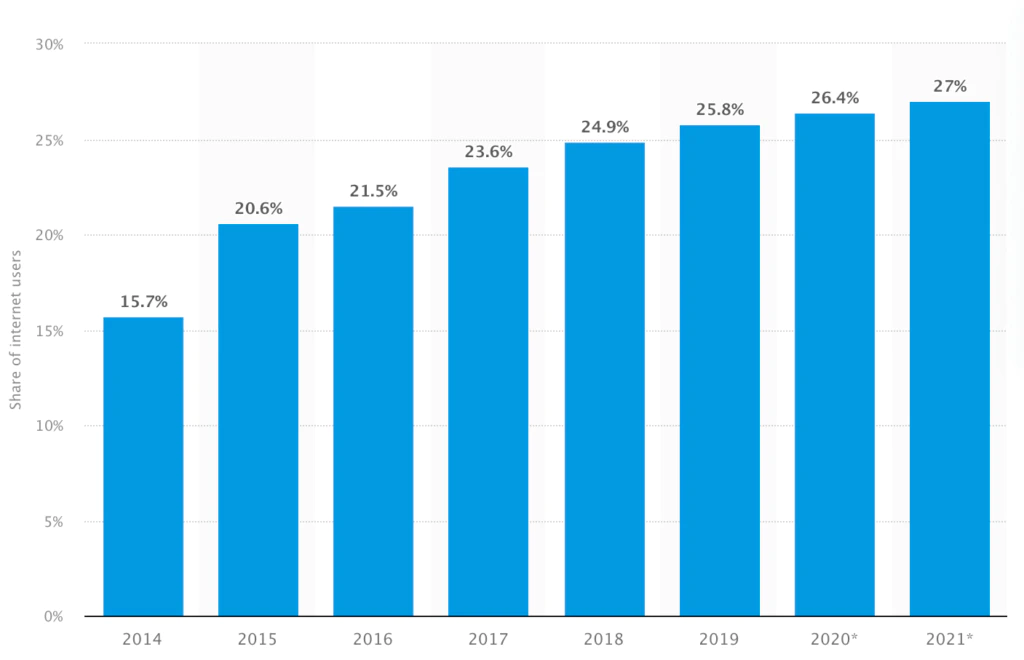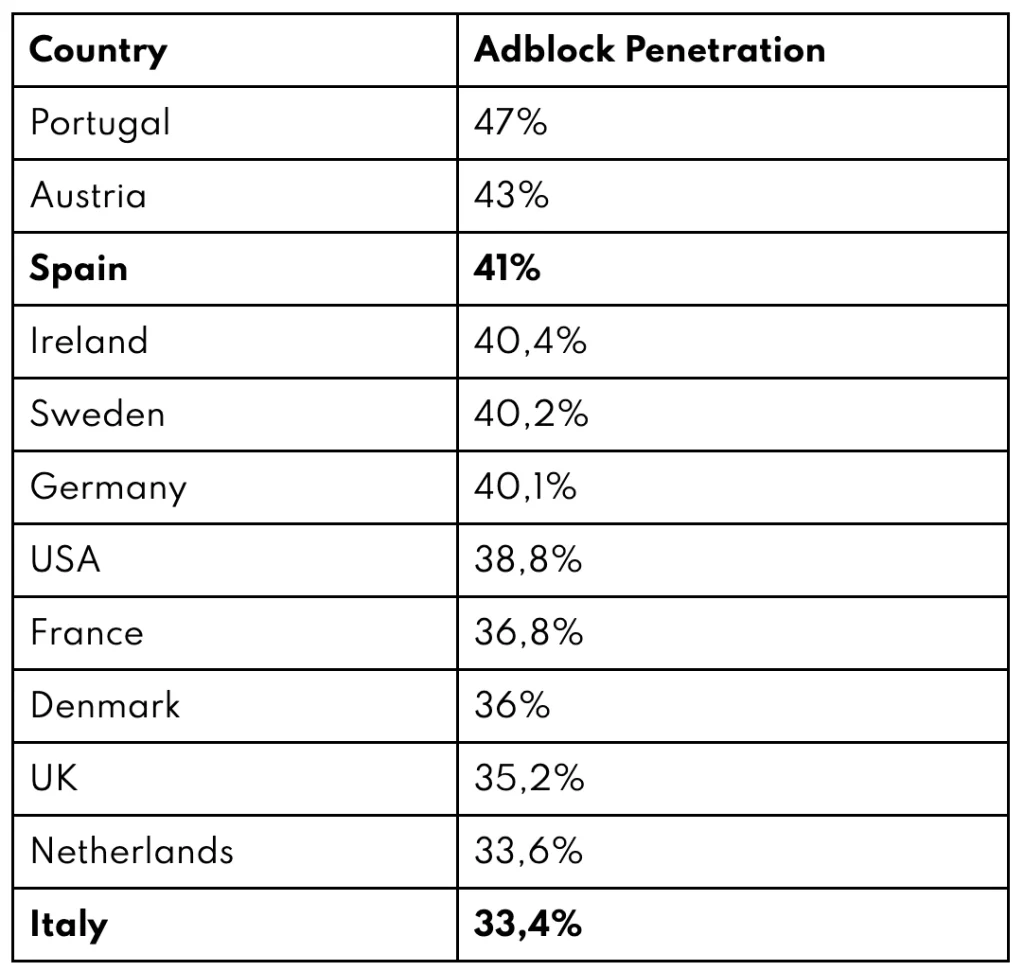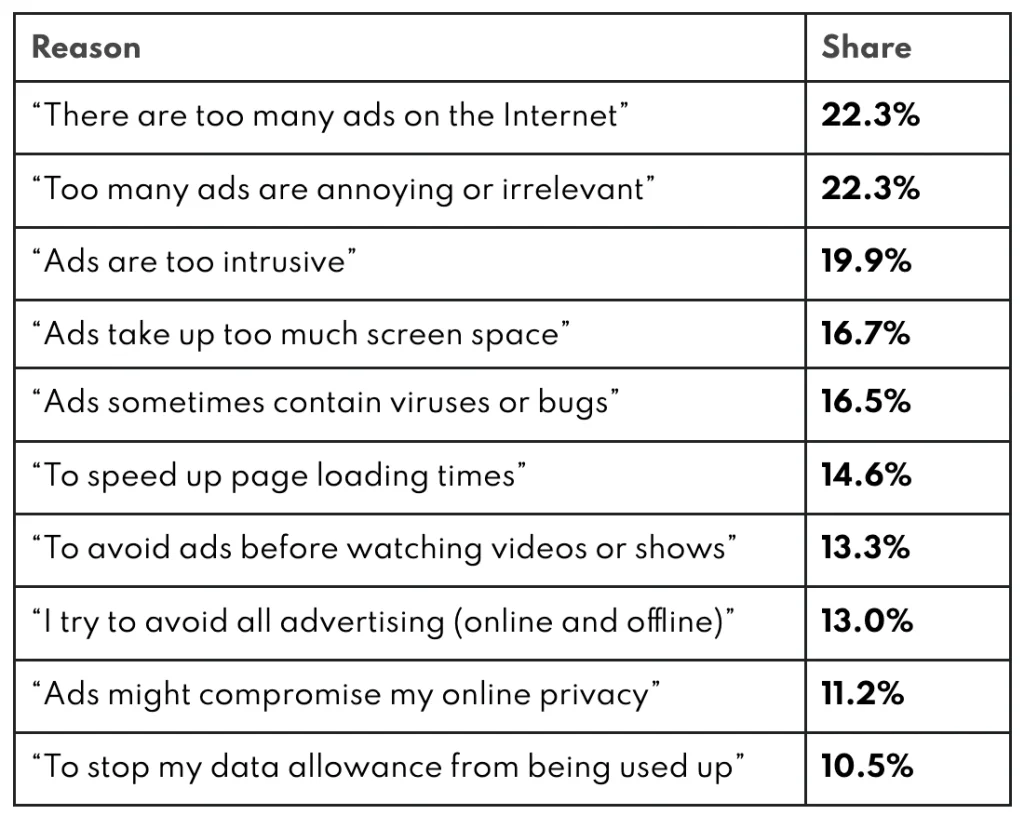The number of ad blocker users continues to rise, albeit slowly. What is at stake here is the future of the free web Vs a web in which few, wealthy users can afford to pay multiple subscriptions.
Those who’ve known me for some time also know that I am a free web absolutist. The free web powered by advertising is what made the internet the place we all love, where anyone has a chance to succeed and where users don’t have to apply for loans to afford dozens of monthly subscriptions. Over the course of my career, I contributed to distribute more than $10bn in advertising revenues across North America, Europe, Middle East and Africa, allowing small and large businesses alike to thrive and employ thousands of people worldwide.
It’s also fair to say that it hasn’t been a smooth ride. Over time, amidst many great businesses that were built on the web, I experienced the greed of a plurality of individuals and corporations abusing technology to prioritize short term gains over long term sustainability. Generally speaking, till a few years ago, the websites were clogged with all sorts of advertisements that ended up frustrating those upon which the system sustains itself, users.
Such abuse of advertising practices led to the proliferation of browser extensions (ad blocking technologies) that prevented advertisements from being displayed. The analogy that comes to mind when thinking of ad blockers in their early days is blast fishing. While the goal to prevent intrusive ads was inherently a good one, the explosion ended up threatening the underlying habitat that was supporting publishers. Along with bad ads, ad blockers also blocked necessary ads that served to remunerate content producers for their efforts. Throwing the baby out with bathwater was simply not the solution.
I must admit that at that time, ad blockers came in as a necessary evil and served the purpose of accelerating the convergence around an acceptable standard of ad density and formats. Since then, there has been a substantial improvement in the quality of web experiences, and that is also a natural evolution of online publishing into a more mature and established industry.
I’m not saying that the web is now an Eden of neat and beautiful experiences but in relative terms, the industry has come a long way since I first started in 2012. Yet, users have maintained a general skepticism and tend to proactively avoid advertising whenever possible. In the US, ad blockers adoption is particularly visible due to a lighter legal framework around privacy (with the exception of CCPA in California) and a consequent “right of self defense” (as you would expect) from advertising.
Image 1: Ad blockers usage in the US
The number of ad blocker users continues to rise, albeit slowly. In 2021, 27% of users in the US regularly used ad blockers.

In terms of usage demographics, younger adults are generally more likely to use ad blockers. According to a March 2021 CivicScience survey, 4-5 in 10 US adults ages 16 to 34 said they use an ad blocker on desktop or laptop computers, while about 3-4 among those ages 35 to 54 said they do so. On smartphones, 18- to 24-year-olds were actually the least likely of any age group to use an ad blocker, at 18% adoption—though usage rates on smartphones jumped to over a third among US adults ages 25 to 34 and 35 to 54.
In Europe, the earthquake-like implications of the GDPR regulation were so pervasive that everyone forgot that ad blockers even exist. However, not only do they still exist but they are pretty popular in a number of countries worldwide. According to a global survey conducted by GWI among internet users between 18-64 years, the percentage of users that used tools for blocking ads for at least some of their online activities in 2021 ranges from 33% (Italy) to 47% (Portugal). This means that on a given day, we can expect publishers to lose approximately 20%-30% of their monetizable impressions.
Table 1. Ad Blocking by country.
Portugal shows the highest usage of ad blockers in Europe with a staggering 47% of users that have used ad blocking tools in 2021.

Why do people still use ad blockers? According to the same study, the overwhelming response is that users continue to find the advertising experience on the web intrusive. While it is fair to say that this perception is partially the result of years of uncontrolled advertising practices on the web, the reality is that if TV users were asked the same question, the response would be equally overwhelming. Ads are annoying, there is no question about that. But what the hell is the alternative? None, users don’t want to see ads and they don’t want to pay for content either. We, humans, want it all.
Table 2. Top reasons why users use ad blocking solutions

The solution lies in uplevelling digital literacy at all levels. Institutions, advertisers, publishers and users all play a role in defining what future we want for the internet. Over time, I’ve seen publishers using all sorts of hacks to combat ad-blocked users, i.e. preventing users from navigating websites, flipping pages upside down… obviously that is not a sustainable path forward either. The solution is to converge towards a standard of ad density and formats that are acceptable to users, offer better ROI to advertisers and yield higher returns to publishers. The goal here is for the entire ecosystem to understand that there is a cost associated with content production and there is no web without a healthy, win-win-win scenario between the three main web constituencies (users, advertisers and publishers).
The Coalition for Better Ads was created to improve the consumer experience through the involvement of international trade associations and media companies. The Coalition conducts research in order to develop data-driven standards for online advertising. The goal is to measure consumers’ preferences about the types of ads they least prefer, in order to help the global marketplace take steps to deliver a better ad experience.
What is really at stake here is the future of the free web Vs a web in which few, wealthy users can afford to pay multiple subscriptions. You know my vote will always be casted for a free web powered by good advertising and I think we are generally getting there. As part of this broader effort, Evolution Group chose to adhere to the standards adopting a technology-first approach. We are now whitelisted to monetize ad blocked traffic by designing a dedicated, lightweight ad experience for users that are sensitive to advertising in an effort to promote the value of good advertising and improving user perception about ads.
Connect with us if you want more info on how to monetize ad blocked traffic!